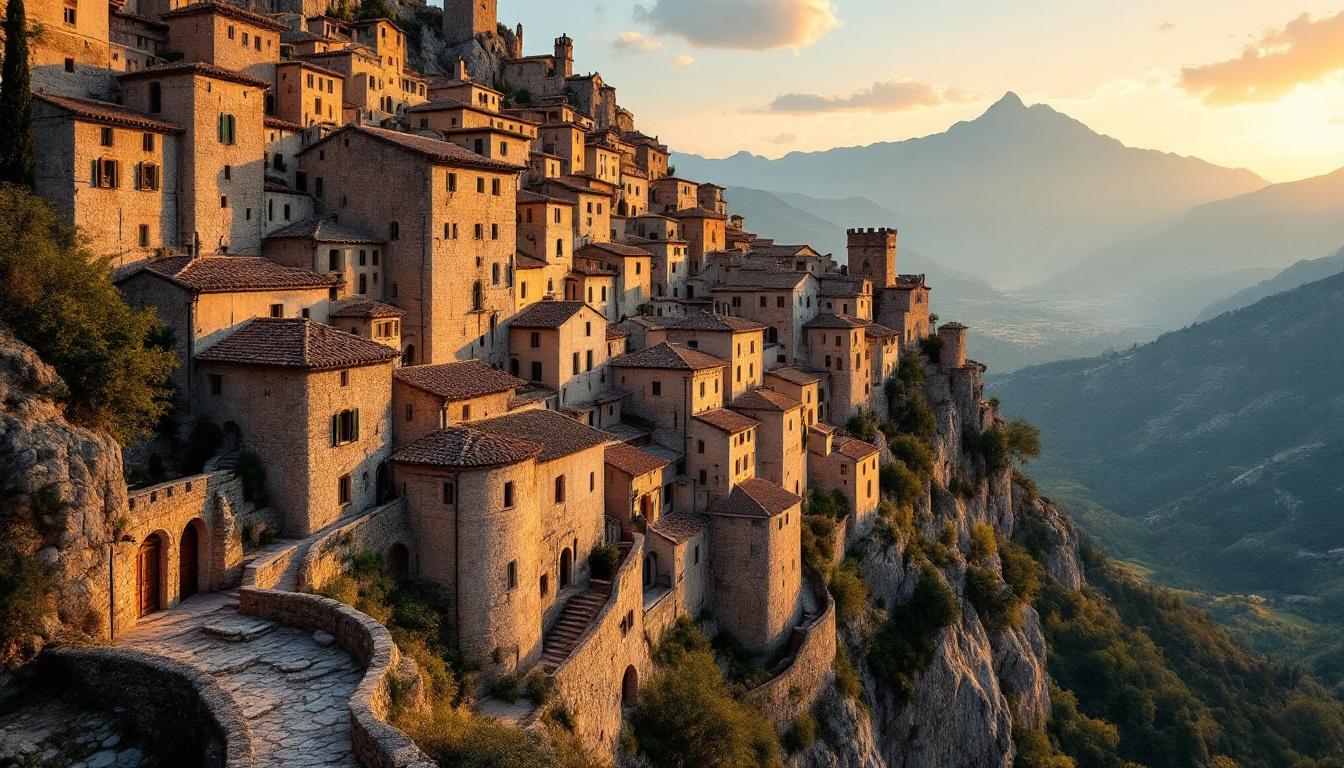In the eastern Pyrenees, where France kisses Spain and mountains embrace the Mediterranean, lies a medieval treasure that time forgot. Mosset—a village of just 300 souls—perches dramatically on a rocky spur 700 meters above the Castellane Valley, its stone houses clustering like a natural extension of the mountain itself. This hidden gem earned its place among “Les Plus Beaux Villages de France” (Most Beautiful Villages of France) not through grand monuments, but through an authentic charm that whispers stories from centuries past.
A village suspended between earth and sky
As you approach Mosset along winding mountain roads, its silhouette appears like a mirage against the Pyrenean backdrop. Unlike tourist-trampled medieval towns, Mosset remains refreshingly genuine. Narrow cobblestone streets twist unexpectedly, revealing centuries-old doorways and windows framed by weathered stone. Local resident Marie Fontaine explains,
“We don’t just preserve old stones here—we live among them. These walls have witnessed 800 years of life continuing uninterrupted.”
Where perfume becomes an art form
Mosset’s most unusual attraction is the Tour des Parfums (Perfume Tower), an interactive museum housed in an ancient stone tower. Here, visitors experience the aromatic plants of the region through scientific and sensory exploration. The adjacent garden bursts with fragrant herbs and flowers that have perfumed the region for centuries. Like other hidden French villages, Mosset preserves traditions that connect deeply to the natural landscape.
Medieval whispers among stone walls
Though much of Mosset’s defensive structures have vanished over centuries, history enthusiasts can still trace the village’s medieval origins. Parts of the ramparts, towers, and entrance gates remain, along with the 13th-century Mascarda watchtower that once warned of approaching danger. The 17th-century Church of Saint-Julien and Sainte-Baselisse stands as testament to the village’s religious heritage, its bells marking time as they have for hundreds of years.
A protected paradise for nature lovers
Nestled within the Parc Naturel Régional des Pyrénées Catalanes, Mosset offers outdoor enthusiasts a playground of marked hiking trails through pristine forests. The biodiversity here is exceptional—protected under European conservation directives—with rare wildflowers dotting the landscape in spring and summer. Unlike some remote island destinations, Mosset balances isolation with accessibility, making it perfect for day-trippers and weekend wanderers.
Architecture that tells stories
Mosset’s buildings hold architectural surprises that reflect regional history. Some houses feature distinctive round bread ovens built into their upper stories—a characteristic rarely seen elsewhere. Local historian Jean Dumont notes,
“These unusual ovens tell us about community life centuries ago. Families would share bread-baking facilities, creating bonds that sustained village life.”
Similar to ancient monastic settlements, Mosset’s architecture reflects practical solutions to mountain living.
Beyond the village walls
Just two kilometers from Mosset lies the 13th-century Romanesque chapel of Corbiac, part of a former monastery. The surrounding area offers treasures like Villefranche de Conflent and Fort Liberia—UNESCO World Heritage fortifications. Like Spain’s hidden coastal wonders, this region reveals unexpected beauty at every turn.
A culinary landscape of tradition
The mountains surrounding Mosset have shaped its gastronomy. Local shepherds produce artisanal cheeses using methods passed through generations. Village cafés serve rustic Catalan dishes like trinxat (cabbage and potato hash) and ollada (meat and vegetable stew). Chef Pierre Laborde of a nearby restaurant explains,
“Our cooking doesn’t follow trends—it follows seasons and traditions that have sustained mountain communities for centuries.”
As twilight bathes Mosset’s stone facades in golden light, visitors understand why this village captivates the imagination. In a world racing toward homogenized experiences, Mosset offers something increasingly precious—authenticity. This isn’t a village preserved for tourists but a living community that carries its heritage with quiet dignity. The past here isn’t displayed behind glass but woven into the fabric of daily life, making Mosset not just a destination, but a glimpse into a way of life that refuses to be rushed.
